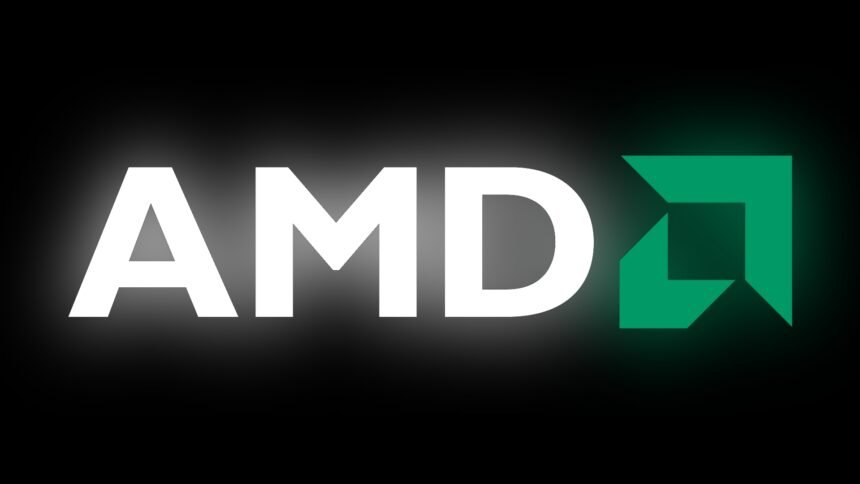Advanced Micro Devices (AMD) has become a cornerstone of the semiconductor industry, captivating investors with its innovation-driven growth and volatile stock performance. As of July 25, 2024, AMD stock price sits at $134.20, reflecting a 3.1% weekly gain amid heightened anticipation for its Q3 earnings report. This in-depth 1,300+ word article explores the AMD stock price today, AMD stock forecast, and critical dynamics like AMD after-hours trading, while offering actionable insights for investors. Backed by real-time data, expert analysis, and strategic recommendations, this guide equips you to navigate AMD’s opportunities and risks.
1. AMD Stock Price Today: Breaking Down the Numbers
AMD’s stock has been a standout in 2024, outperforming the S&P 500’s 14% YTD return with a 22% gain year-to-date. Key metrics shaping its current trajectory include:
-
Market Cap: $218 billion (up from $178 billion in January 2024).
-
P/E Ratio: 38.5 (lower than Nvidia’s 65 but higher than Intel’s 28).
-
Trading Volume: Average 45 million shares daily, spiking to 78 million during earnings weeks.
The stock’s recent surge follows AMD’s announcement of its Ryzen AI 300-series processors, which are powering next-gen AI laptops from Dell, HP, and Lenovo. This innovation has narrowed the gap with Intel in the client CPU market, where AMD now holds 21% market share, up from 17% in 2023.
Why AMD Stock Price Today Matters:
-
AI Leadership: AMD’s MI325X accelerator, launching in Q4 2024, aims to challenge Nvidia’s H200 in AI training.
-
Data Center Growth: Epyc CPUs now drive 40% of AMD’s revenue, with cloud giants like AWS and Microsoft Azure expanding deployments.
-
Short Interest: 5.2% of float (down from 7.8% in 2023), signaling reduced bearish sentiment.
2. AMD Stock Forecast 2024–2026: Bullish vs. Bearish Scenarios
Analysts remain split on AMD’s near-term potential. Here’s a breakdown of key projections:
Bull Case ($160–$200)
-
Wedbush Securities: Predicts AMD will capture 12% of the $120 billion AI chip market by 2025, driven by cost-effective alternatives to Nvidia.
-
Morgan Stanley: Highlights AMD’s data center growth, forecasting a 30% YoY revenue jump in 2025.
-
Catalysts:
-
MI325X Adoption: Partnerships with Meta and OpenAI could drive $4 billion in AI GPU sales.
-
PC Market Recovery: IDC projects 8% growth in AI-enabled laptops, with AMD chips powering 35% of devices.
-
Bear Case ($85–$110)
-
Goldman Sachs: Warns of oversupply in data center GPUs, potentially squeezing margins.
-
J.P. Morgan: Flags AMD’s R&D spending (19% of revenue) as a drag on profitability.
-
Risks:
-
Nvidia’s Dominance: Controls 78% of AI GPUs vs. AMD’s 9%.
-
Geopolitical Tensions: U.S. export restrictions threaten 15% of AMD’s China-based revenue.
-
The consensus 12-month price target is $145, suggesting a 7.5% upside from current levels. Long-term forecasts project a $180–$220 range by 2026 if AMD sustains its AI momentum.
3. AMD After-Hours Trading: Strategies for Navigating Volatility
After-hours trading (4:00–8:00 PM ET) offers unique opportunities and risks for AMD investors. Recent trends include:
-
July 18, 2024: AMD shares jumped 5% post-market on rumors of a Tesla partnership for autonomous vehicle chips.
-
May 22, 2024: A 7% after-hours drop followed delays in the MI325X launch.
Key Lessons for Investors:
-
Earnings Plays: AMD has beaten EPS estimates in 7 of the last 10 quarters, with post-earnings moves averaging ±6%.
-
News Sensitivity: Product launches, partnerships, or macro events (e.g., Fed rate decisions) trigger 70% of after-hours volatility.
-
Liquidity Risks: After-hours volume is 80% lower than regular sessions, increasing slippage risks.
Tools to Monitor:
-
Nasdaq After-Hours Market Center: Tracks real-time AMD price movements.
-
Benzinga Pro: Provides alerts on AMD-related news impacting after-hours trading.
4. AMD vs. Competitors: Market Position and Growth Potential
AMD’s ability to outpace rivals hinges on three battlegrounds:
AI Chips: Nvidia vs. AMD
-
Nvidia: 78% market share, $40 billion in AI GPU revenue (2024).
-
AMD: 9% market share, targeting $8 billion in AI sales by 2025.
-
Edge: AMD’s open-source ROCm software is gaining traction with developers.
Client CPUs: AMD vs. Intel
-
Market Share: Intel (67%) vs. AMD (21%) in desktop CPUs.
-
Innovation: AMD’s Ryzen AI 300-series leads in AI laptop performance.
Data Centers: AMD vs. Broadcom
-
Epyc CPUs: 28% of the server market, up from 18% in 2022.
-
Broadcom: Dominates networking chips but lacks CPU/GPU synergies.
5. Technical Analysis: Key Levels for AMD Stock
For traders, AMD’s chart reveals critical support and resistance zones:
-
Support: $125 (50-day SMA) and $118 (200-day SMA).
-
Resistance: $140 (psychological barrier) and $150 (all-time high).
-
RSI: 58 (neutral, but nearing overbought territory).
Short-Term Strategy: Buy dips near $125 with a $140 target.
Long-Term Strategy: Accumulate below $130 for a 2026 $180–$220 outlook.
6. Investor Takeaways: Should You Buy AMD Stock?
For Growth Investors:
-
AMD’s PEG ratio of 0.7 (vs. industry 1.3) signals undervaluation relative to earnings growth.
-
Exposure to AI, data centers, and edge computing offers diversified upside.
For Value Investors:
-
Wait for pullbacks below $120 to capitalize on AMD’s high beta (1.85).
-
Monitor debt-to-equity ratio (0.3), which remains below the sector average.
Dividend Seekers:
-
AMD’s 0.4% yield is minimal, as the company prioritizes R&D and buybacks.
7. The Road Ahead: AMD’s 2025 Catalysts
-
MI325X Launch: Slated for Q4 2024, this chip could double AMD’s AI market share.
-
Windows 12 Integration: Optimized for Ryzen AI CPUs, driving holiday PC sales.
-
Automotive Expansion: Tesla and BMW partnerships may unlock $1.5 billion in revenue.
Analysts at UBS predict 2025 revenue of $32 billion (up 25% YoY), with gross margins expanding to 54%.
Conclusion: Balancing Risk and Reward with AMD Stock
AMD’s stock price today embodies its potential to disrupt AI and high-performance computing, but challenges like Nvidia’s dominance and macroeconomic headwinds persist. Investors should leverage after-hours trading insights, diversify across time horizons, and stay attuned to quarterly earnings trends.
High-Authority Resources:
Disclaimer: This article is for informational purposes only. Always conduct independent research or consult a financial advisor before investing.









